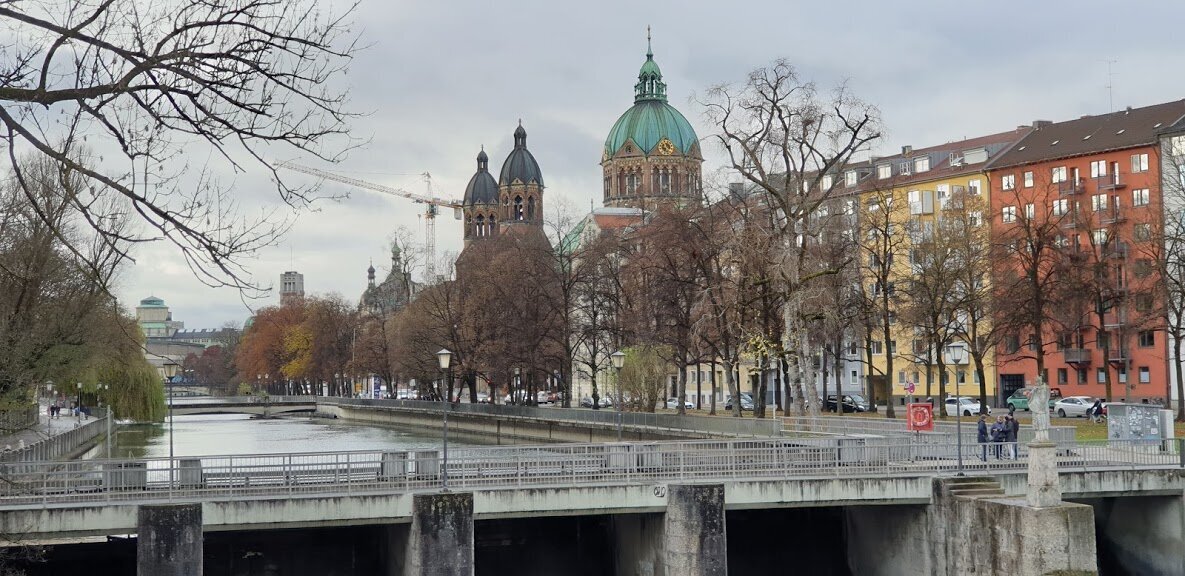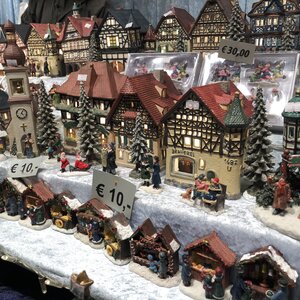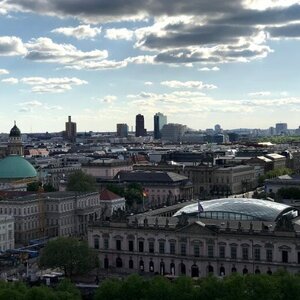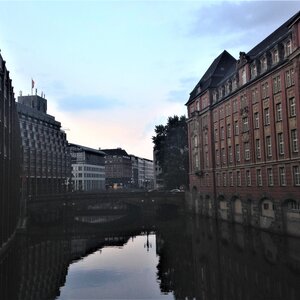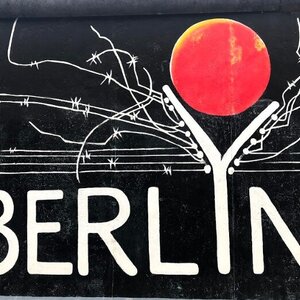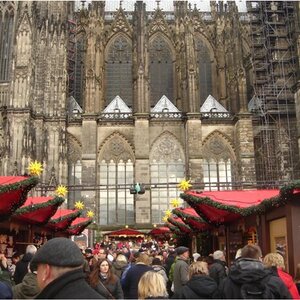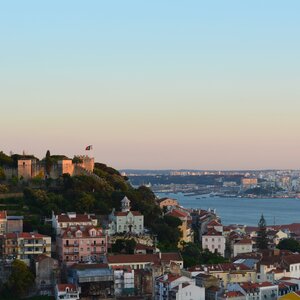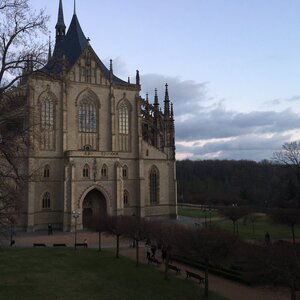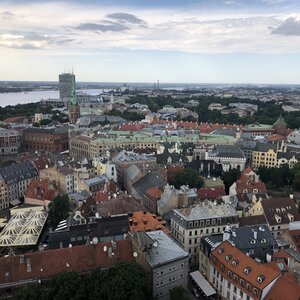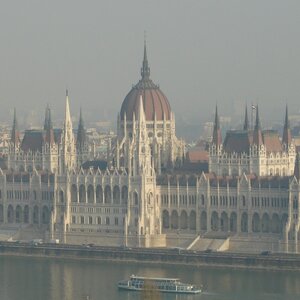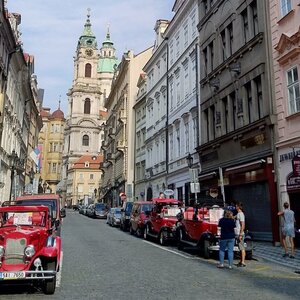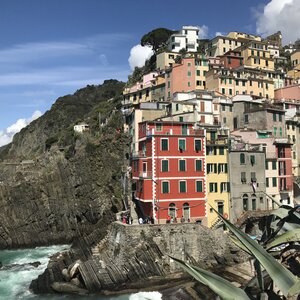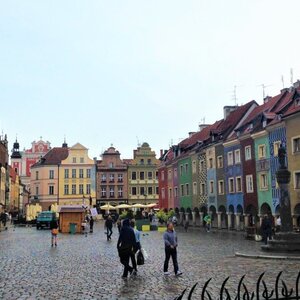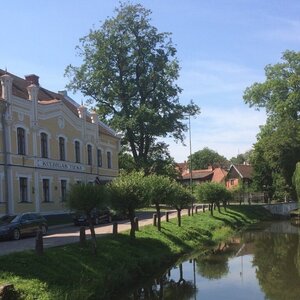In Munich, drink! It is the most popular activity for tourists and locals in the capital of Bavarian beer and Bavarian cars. Who hasn’t heard of Oktoberfest, the world famous beer festival? It takes place in Munich in September. At the end of April is Frühlingsfest, a copy of Oktoberfest, but with fewer tourists. But I will show you that Munich is not only beer and sausages, although they are delicious; it is also an old city, founded in the XII century. There are museums, parks and entertainment to suit all tastes. There’s plenty to do for days.
Marienplatz (Marienplatz)
The central square Marienplatz has always been the center of attraction for the citizens — here the market was buzzing, the town hall stood and all the important events of the city were held. This is also where Munich's main Christmas fair takes place.
In the center of the square stands the Mariensäule, a pink marble column topped by a statue of the Madonna. The four sculptures at the base of the column symbolize famine, war, plague and heresy. Next to it stands the Neues Rathaus, built at the end of the 19th century under King Ludwig I.
Note the clock on the Town Hall — it has 43 bells and 32 human-sized figures. Every day the figures come to life and show scenes of medieval life under the chimes — this performance takes place daily at 11:00 and 12:00, and from May to October — also at 17:00.
The 85-meter-high Town Hall is crowned by an observation deck, where you can take an elevator and enjoy a view of the entire city.
- Climb to the observation deck — 4 €.
- Open from 10:00 am.
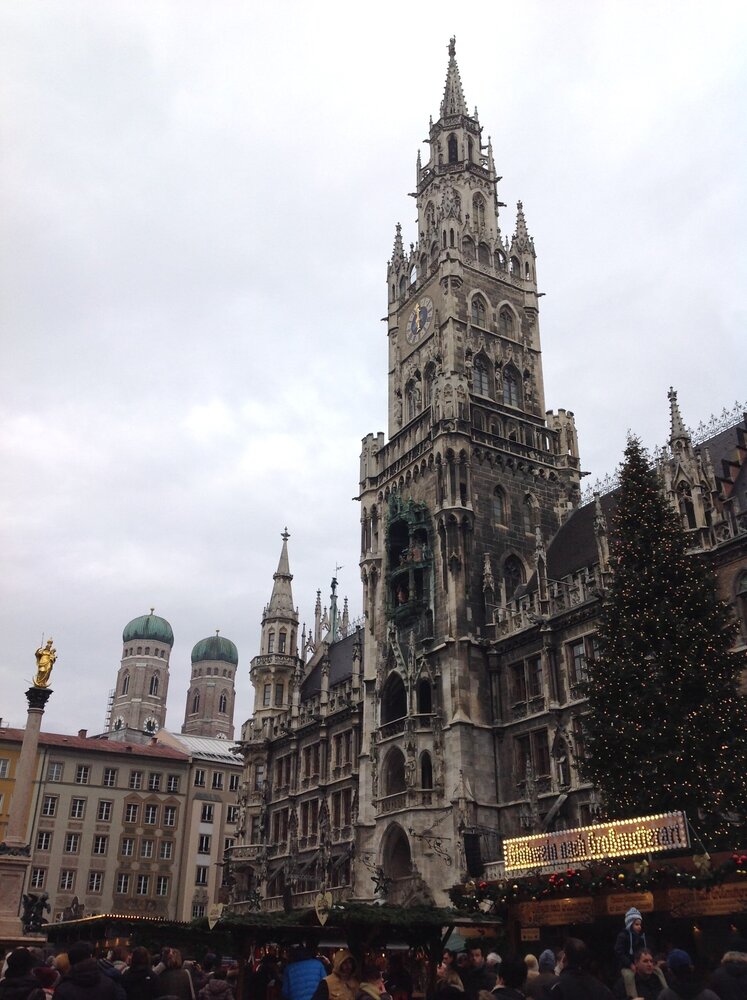
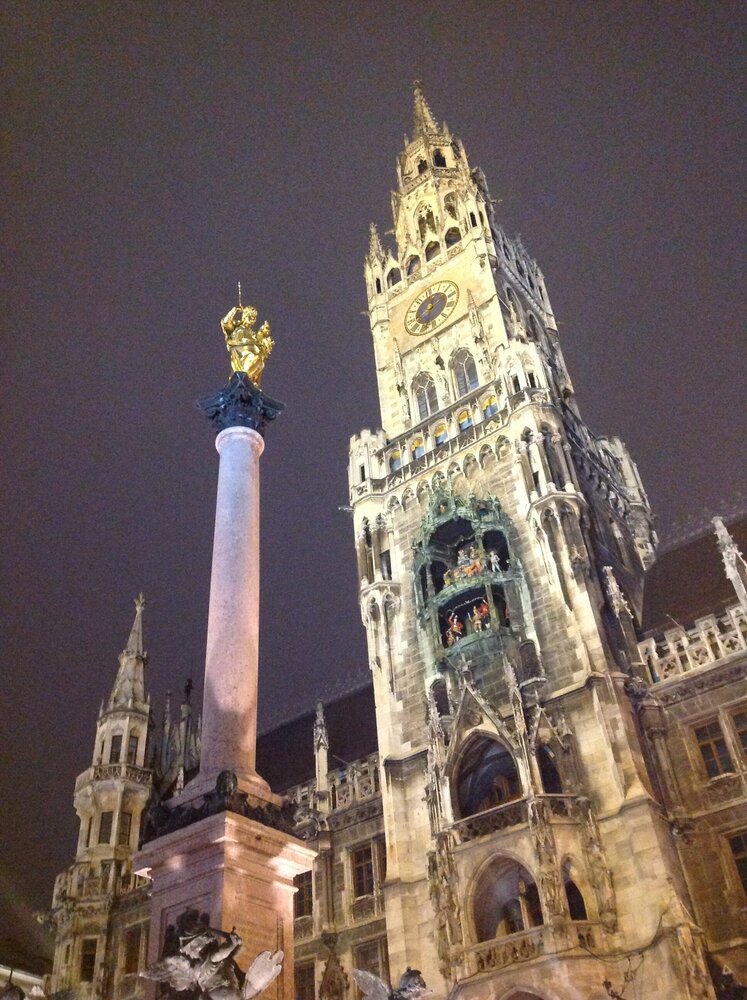
Nearby is the old town hall (Altes Rathaus) — its building now houses a toy museum (Spielzeugmuseum). It was founded by Czech filmmaker Ivan Steiger, who collected toys for a long time and then exhibited them all in this museum.
- The museum is open from 10:00 am.
- Tickets are 6 €.
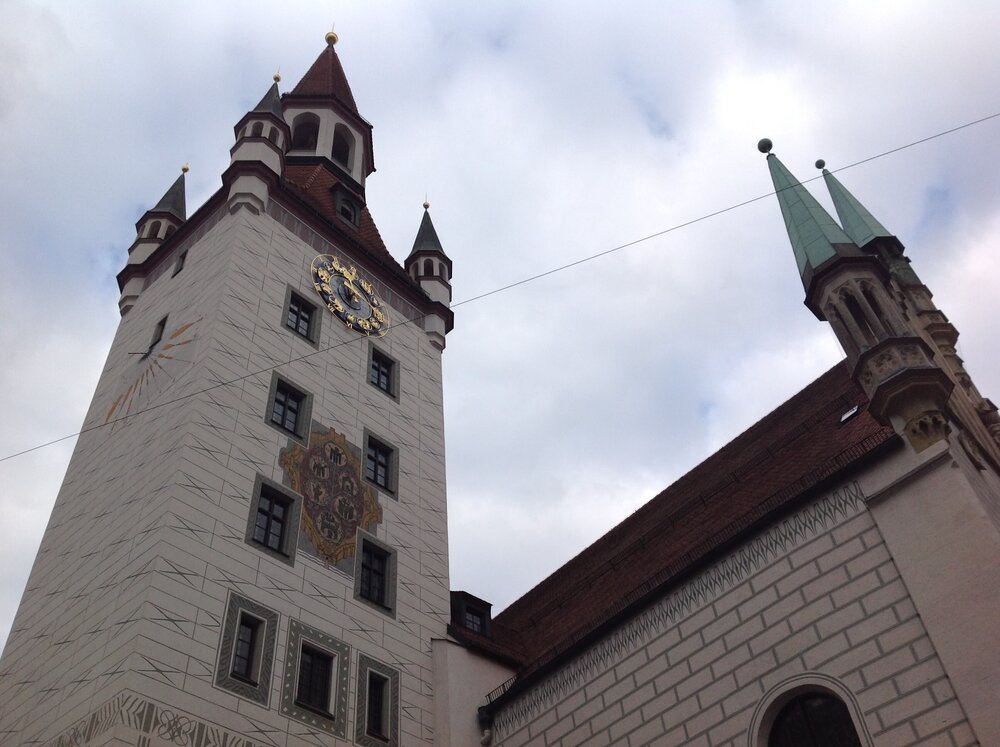
St. Peter’s Church (Pfarrkirche Sankt Peter)
This is the oldest church in Munich. It is said to have been founded by monks, after whom the city was later named (Munichen means «by the monks» in Old German). The observation deck on its bell tower is higher than on the town hall (92 m).
- Open from 09:00, weekends and holidays from 10:00.
- There are 299 steps to the observation deck, no elevator.
- Tickets to the tower are 3 €, to attend mass is free.
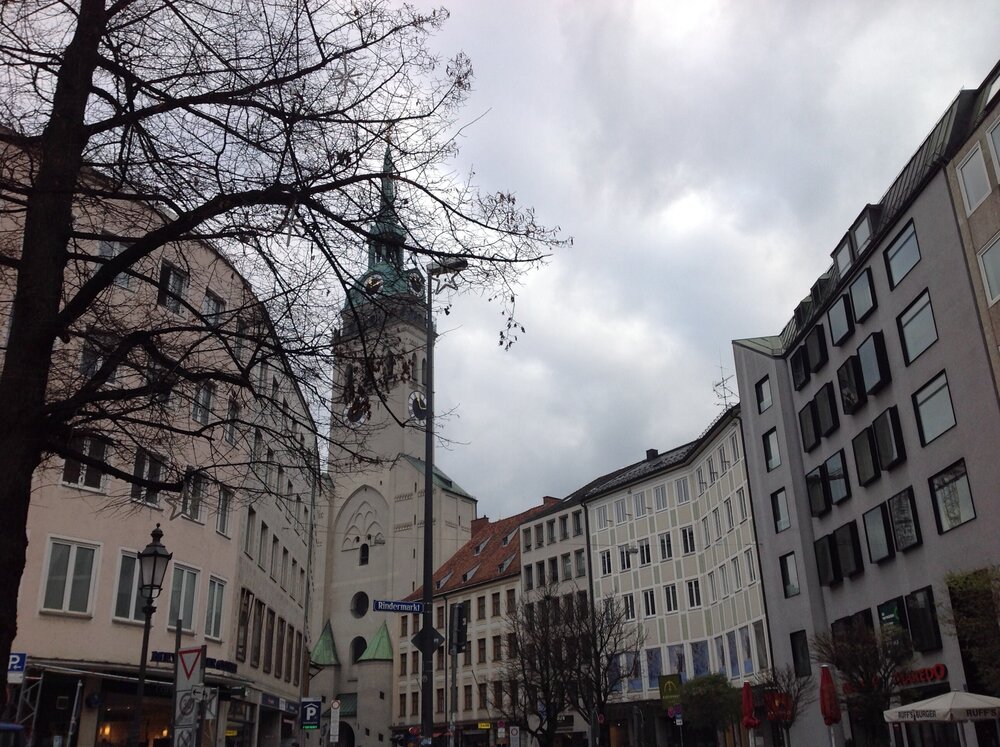
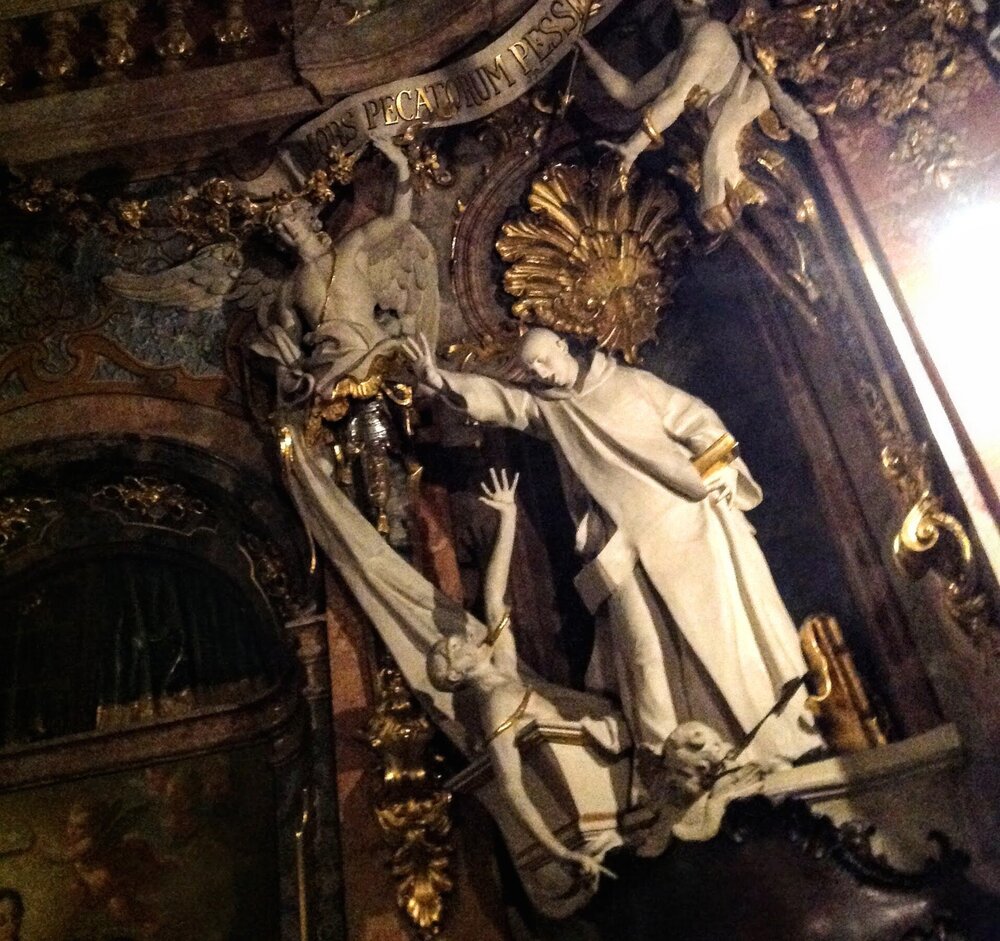
Pinakotheken (Pinakotheken)
A cultural program in Munich is unthinkable without a visit to the art galleries — the Old Pinakothek, the New Pinakothek and Modern Art. All of them are located close to each other.
Alte Pinakothek (Old Pinakothek)
Holds paintings from the 14th through 18th centuries — Leonardo da Vinci’s Madonna and Child, Rembrandt’s Deposition from the Cross, Pieter Bruegel’s Land of Plenty, as well as works by El Greco, Titian, Rubens and Dürer.
- Open from 10:00 a.m. to 6:00 p.m., Tuesdays until 8:00 p.m. Monday is a day off.
- The ticket is 7 €.
- The museum’s official website has been down for a few months, but they post all the latest information on the forum.
Neue Pinakothek.
Van Gogh, Toulouse Lautrec, Édouard Manet, Paul Gauguin, Claude Monet, Cézanne, Edward Munch and sculptures by Rodin are on display.
- The ticket is 7 €.
- As of July 2019 the new Pinakothek is temporarily closed, all exhibits have been moved to the old Pinakothek for this time, there is no information about this on the museum’s website.
Pinakothek der Moderne (Pinakothek der Moderne)
It opened opposite the Old Pinakothek in 2001. It presents works by Wassily Kandinsky and Oskar Kokoschka, Pablo Picasso and René Magritte, Paul Klee, Andy Warhol and Joseph Beuys.
- Open daily from 10:00 a.m. except Mondays.
- Tickets are €10.
Hofbräuhaus Beer Restaurant (Hofbräuhaus)
Next to the main square is the oldest beer restaurant-bar, the Hofbräuhaus. It opened at the end of the 16th century as a court restaurant, and since 1828, by decree of King Ludwig I, it has been open to everyone. On the first floor there is a hall with long communal tables for 1300 people. The second floor hosts organized groups and the third floor is a festive room for special events. There is a safe in which the beer mugs of regular visitors are kept
Mozart, Empress Sisi, Vladimir Lenin with Nadezhda Krupskaya and Adolf Hitler liked to visit this institution.
- Open from 9:00 to midnight.
- Website.
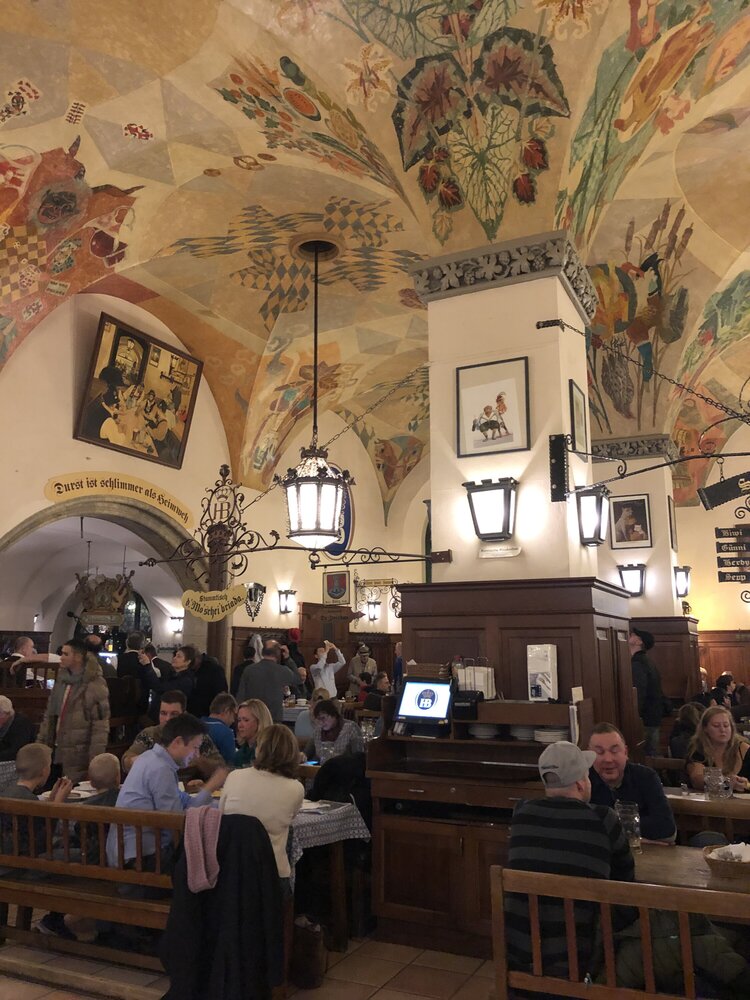
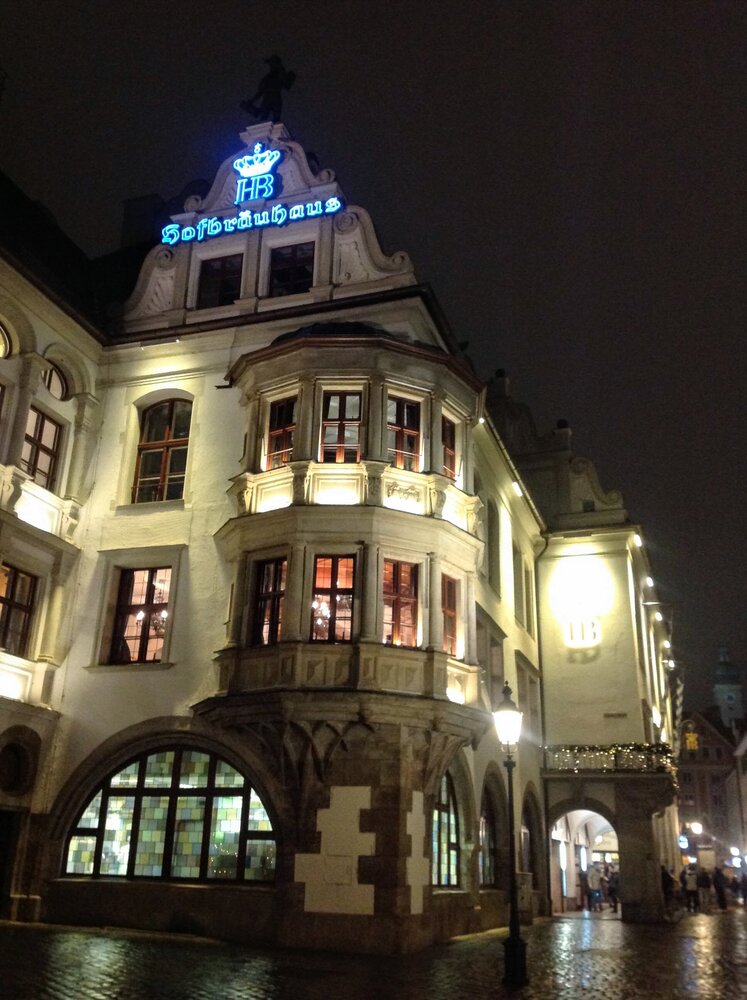
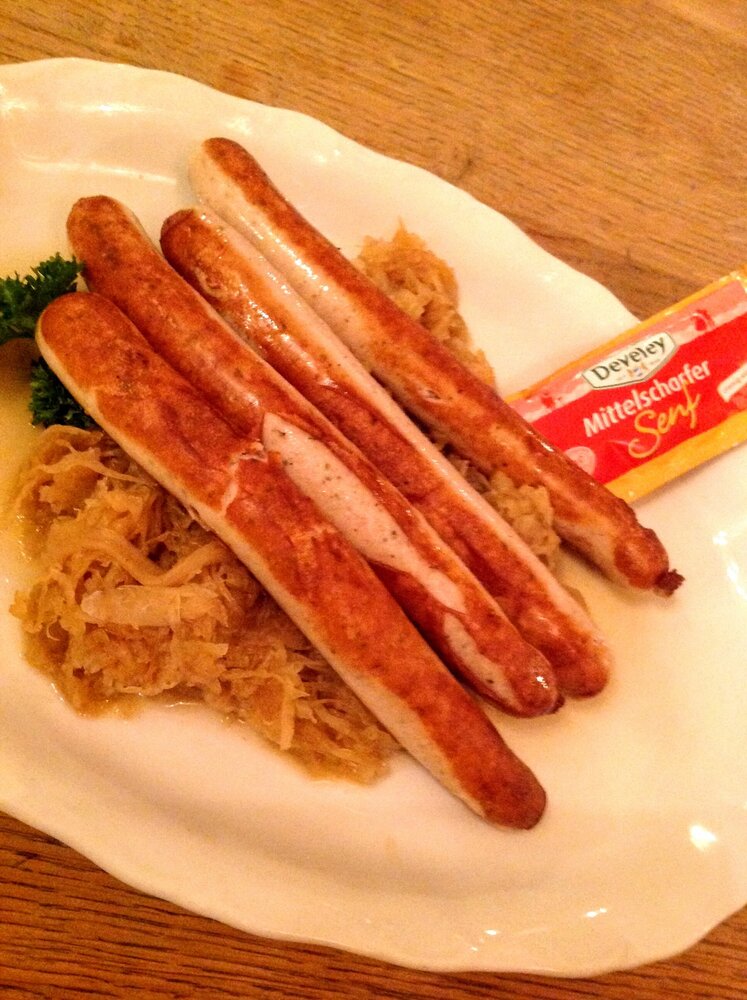
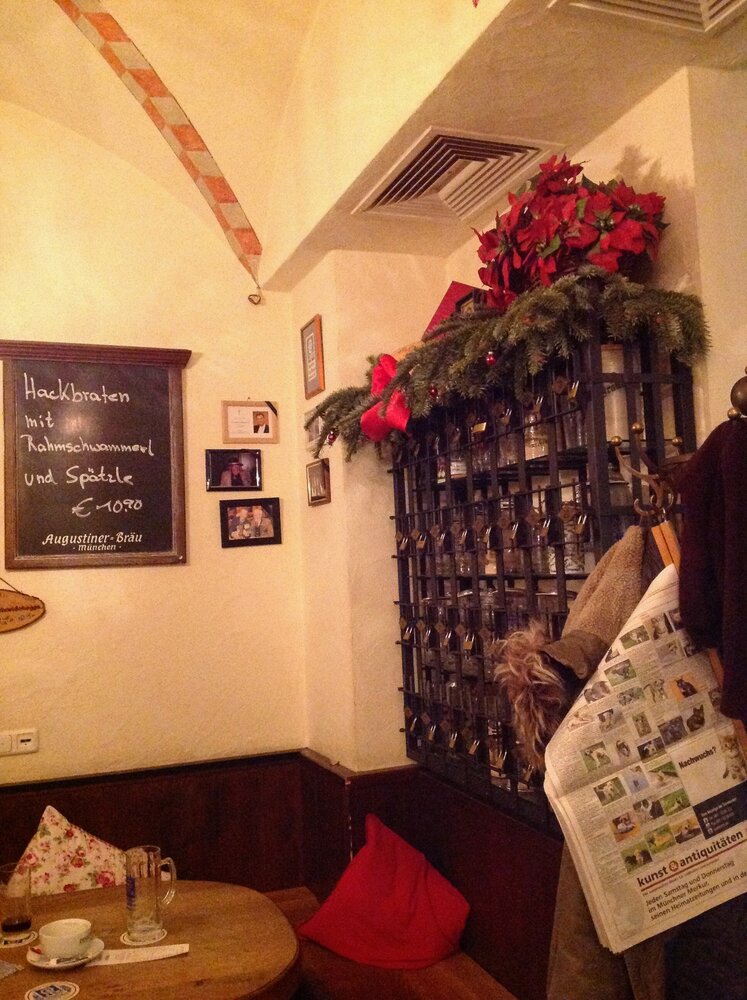
Bier und Oktoberfestmuseum (Bier und Oktoberfestmuseum)
Here you can learn all about the history of brewing, drinking culture and Oktoberfest.
- Open Tuesday through Saturday, from 1 p.m. to 6 p.m.
- Tickets are 4 euros.
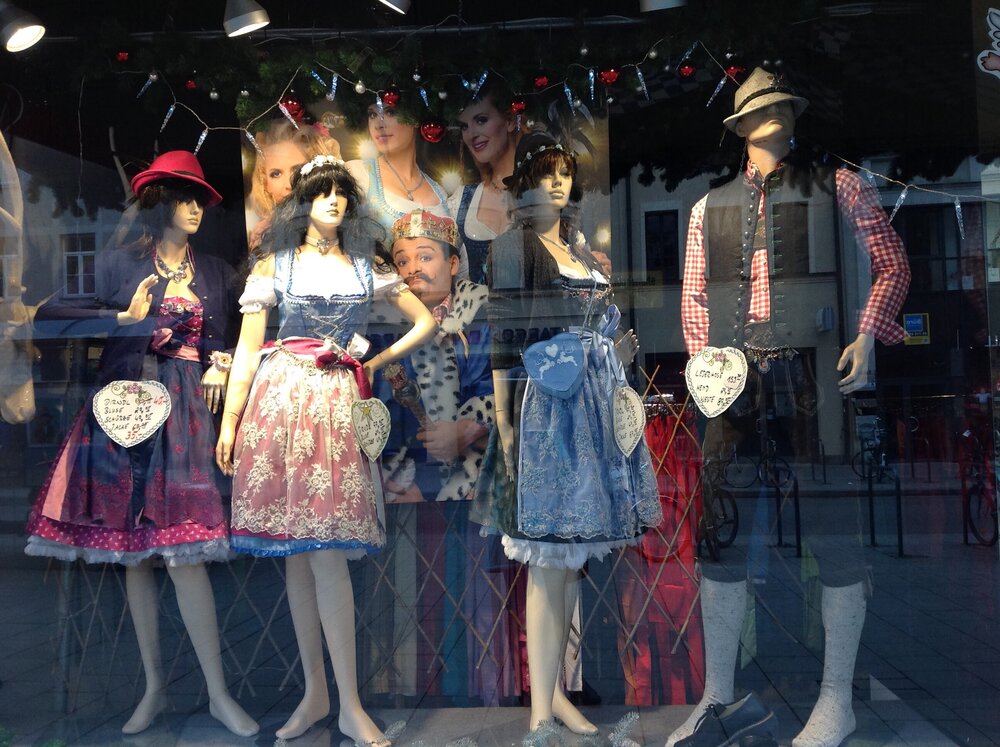
Olympic Park (Olympiapark)
The Olympic Park was designed by the architectural firm of Günter Benisch for the 1972 Olympic Games. The park contains two stadiums, a velodrome, a skating rink, a tennis court, an Olympic village, which has now become a residential neighborhood, and other sports facilities. The roofs of the sports facilities are covered with canopies made of acrylic glass and steel cables, which create the feeling of a weightless web.
In the Olympic Village hangs a plaque commemorating the terrorist attack at the very beginning of the Olympic Games on September 5, 1972, when 11 Israeli athletes were killed.
The concrete and steel stadium has a capacity of 70,000 people. In 1988, this stadium hosted a landmark match of the European Football Championship, when Marco van Basten scored one of the most outstanding goals in the history of world soccer to Rinat Dasaev, and the USSR national team lost to the Netherlands. You can walk along the roof of the stadium accompanied by a guide — excursionists are strapped to the fence with special equipment.
- The stadium is open to the public from 09:00 am and from 11:00 am in January-February.
- Tickets are €3.50.
After the Olympic Games, the stadium hosted home games of the Bavaria München soccer team and international championships in soccer and athletics. Almost all world stars have performed here: Michael Jackson, Pink Floyd, U2, Guns’n’Roses, Elton John, AC/DC, Bon Jovi, Madonna and Depeche Mode. The park hosts the annual Rock im Park music festival.
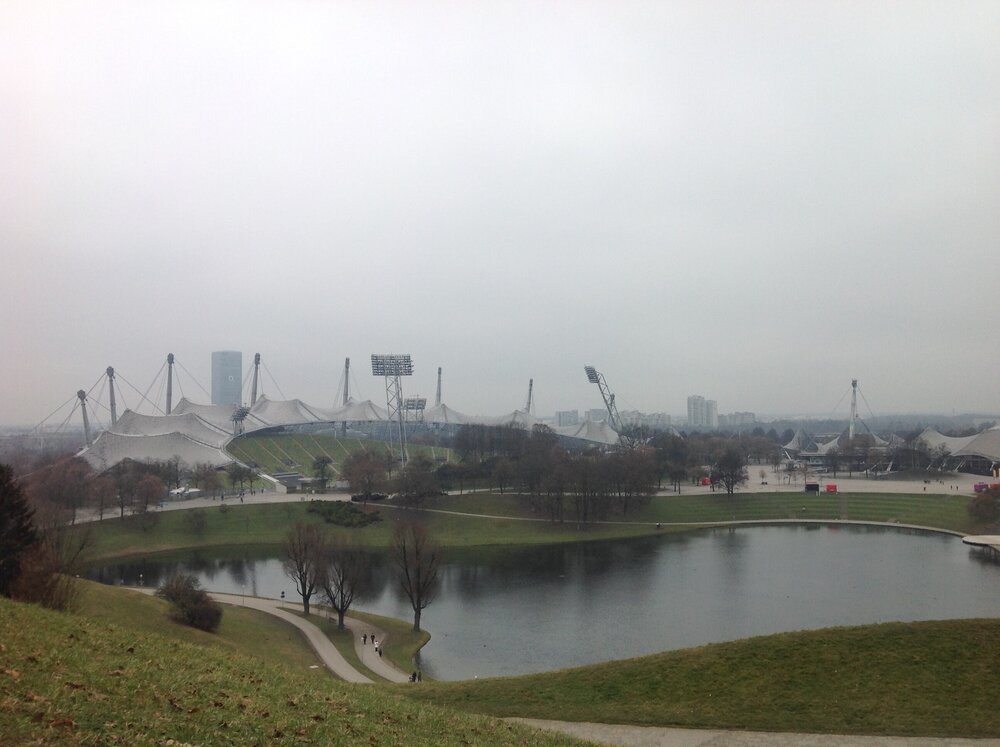
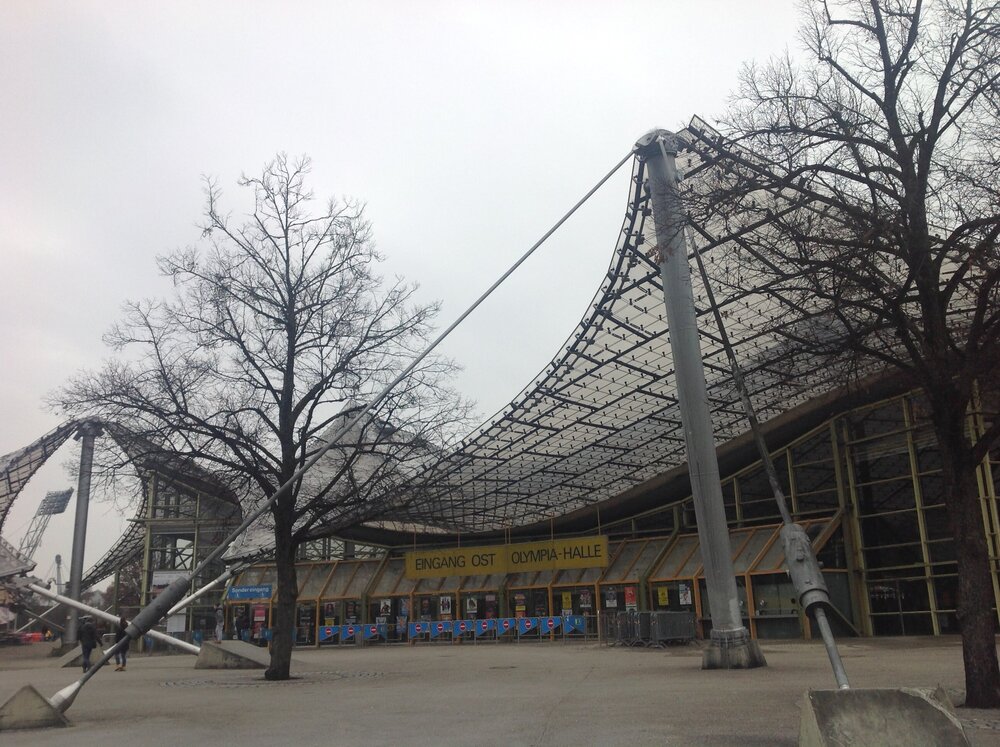
The center of attraction for tourists is the Olympic Tower (Olympiaturm), a total height of 290 m, with two observation decks and a revolving restaurant. The elevator rises to a height of 1,230 steps at a speed of 7 m/s. The observation decks are at a height of 171 and 192 meters. In good weather, visibility reaches up to 40 km and offers views of the highest skyscraper in the city — Uptown Munich, Frauenkirhce and another skyscraper, the Highlit Tower, even the Alps can be seen.
- Opening hours are from 09:00 to midnight.
- Tickets are 9 €.
In 2004, the highest located rock museum in the world (Rockmuseum) opened in the tower. The exhibits include tickets, newspaper articles, stage costumes and musical instruments of Freddie Mercury, Pink Floyd and the Rolling Stones.
- The ticket is included in the price to visit the observation deck.
- The museum’s website.
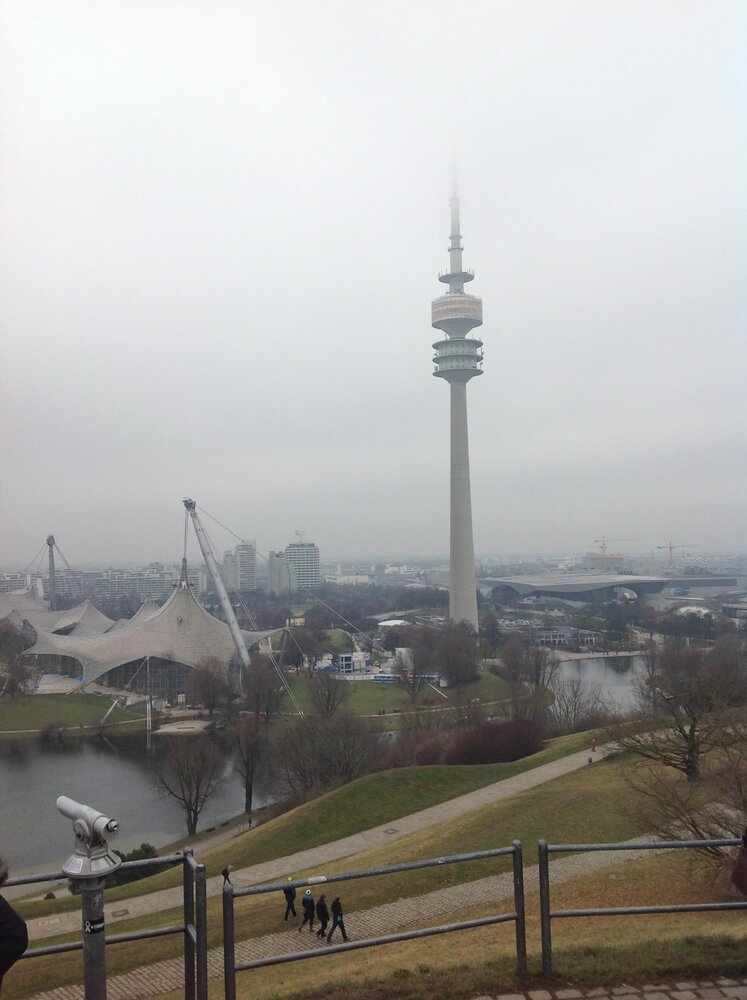
BMW Museum
Sausage pot, salad bowl, soup pot — that’s what the locals call the BMW Museum. The building actually depicts a gas tank, and the roof features the BMW emblem — a stylized white propeller against a blue sky.
The museum was opened in 1972 shortly before the Olympic Games near the Olympic Park and is part of the BMW building complex — it houses the headquarters, museum and car showroom and exhibition center.
The exhibition areas cover about 5,000 square meters. The exhibition starts in the basement and spirals upwards. The expositions of the museum show the history of the automotive concern, cars, motorcycles and airplanes, sports cars, as well as engines and propellers for airplanes — the history of the concern began in 1916 with the production of propellers.
- The museum is open Tuesday through Sunday, 10:00 am to 6:00 pm.
- Tickets are 10 €, together with a ticket for the Olympic Tower — cheaper, buy online.

Englischer Garten (English Garden)
One of the largest city parks with the territory of more than 40 hectares is a place of rest for citizens and guests of the city, surfers and nudists, tea and beer lovers.
The park was founded in the late 18th century by Prince Carl Theodor of Bavaria and soon became Europe’s first folk park open to the public.
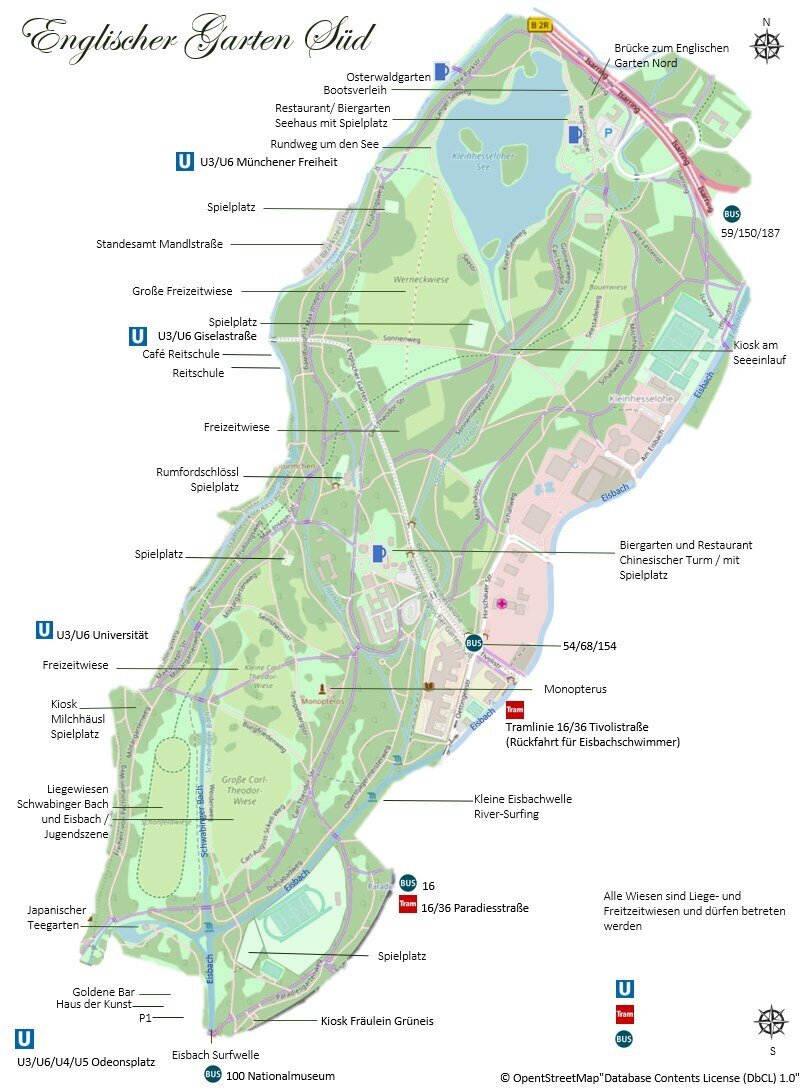
Since June 18, 2010, the park has become an official place for surfers — they practice all year round on the Eisbach brook — near the Haus der Kunst, the brook forms a wave.
The view of the entire park is from the Monopter, a Greek-style rotunda with a domed roof.
In the southern part of the park is the Chinesischer Turm (China Tower) — it is modeled after the Great Pagoda in London’s Royal Park. It was destroyed during World War II and rebuilt in 1952. It hosts the annual Kocherball costume festival from 6 to 10 am one Sunday in July. The festival originated from the tradition of Munich workers gathering before work to party and dance.
Japanese Tea House (Japanisches Teehaus) — holds tea ceremonies in a traditional Japanese-style house. The building was donated by the Japanese city of Sapporo for the Munich Olympics in 1972.
Admission to the park is free and 24 hours a day.
Schwabing quarter (Schwabing)
The prestigious district of Schwabing is sometimes compared to Paris' Montmartre. Wassily Kandinsky, Thomas Mann and Vladimir Lenin lived here.
On Hohenzollernstraße, look for the most popular stores and boutiques, while Leopoldstrasse lures with plenty of bars and clubs.
Deutsche Museum
This is the largest museum in Munich — you can’t go through all the sections at once, so you have to choose. Its expositions are devoted to various fields of science and technology. The aviation section is so large that it had to be housed in a separate building near the Nymphenburg Palace.
- Open from 09:00 to 17:00.
- The ticket is 14 €.
Dachau
This town, 17 kilometers north of Munich, was the site of the Dachau concentration camp from 1933 to 1945. Incoming prisoners were greeted by the inscription on the gate Arbeit macht frei («Work frees you»). During the years of the existence of the labor education camp, about 200,000 prisoners were admitted here, of whom about 40,000 died. During World War II, medical experiments were carried out here, prisoners were suffocated in gas chambers and tortured in unbearable labor.
In 1965, a museum commemorating the victims of Nazism was opened on the camp’s grounds at the initiative of surviving prisoners. There is an oppressive and heavy atmosphere in the camp: a few barracks, an observation tower and some barbed wire on the site of the former gas chambers have been preserved. On the site of the crematorium there is a memorial stone with the inscription Denket daran wie wir hier starben («Think how we died here»).
In 1967, the Church of Reconciliation (Versoehnungskirche) was built. It was built in the same style as all the buildings on the concentration camp grounds, with dark-colored interiors.
In 2003, Dachau opened a permanent exhibition in a former factory building. The 13 sections of the exhibition present a documented chronology of Dachau as a concentration camp and as a place of remembrance after the war.
- Admission is free.
- Open for visits from 09:00 to 17:00.
Schloss Nymphenburg (Nymphenburg Castle)
The palace with its adjoining castle and park is one of the longest palace complexes in Europe — it stretches 632 meters from north to south.
The first palace of the park ensemble was built in the middle of the 17th century by order of Elector Ferdinand. All subsequent owners expanded the territory and built new castles in accordance with the fashionable trends in architecture — that is why Baroque and Rococo elegantly blended in the appearance and interiors of the palaces.
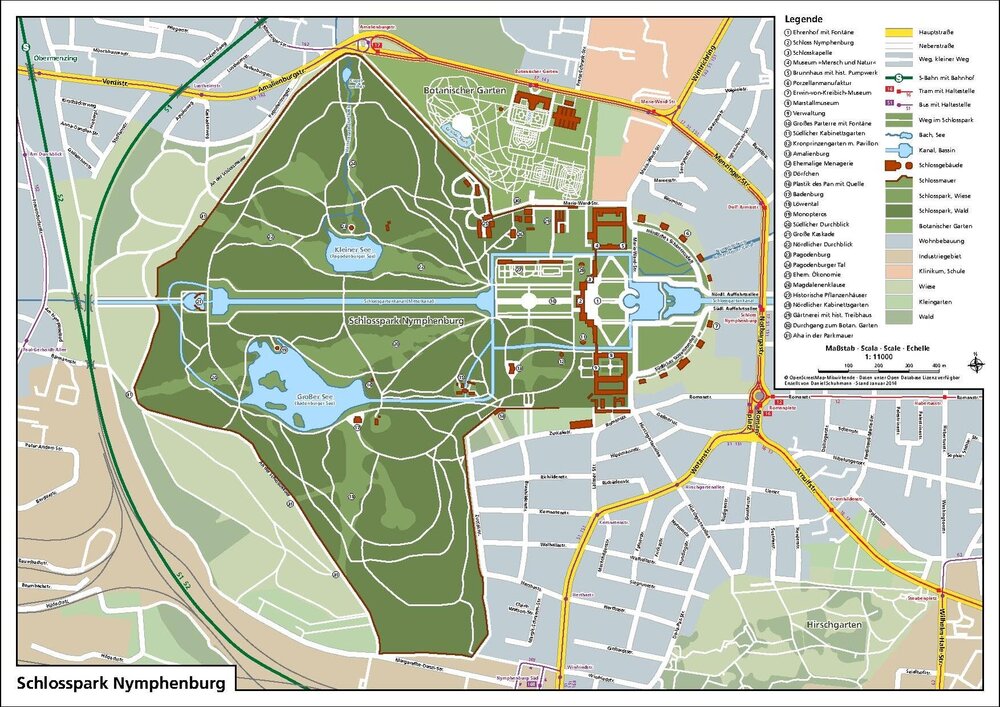
Among the pavilions in the park, Amalienburg Castle stands out as a hunting lodge, a luxurious rococo castle in a white and silver color scheme. It was built by Elector Karl for his wife Maria Amalia in the late 18th century. Nearby is the royal baths with a swimming pool and the Badenburg baths.
Pagodenburg was originally built in the Chinese style and looked like a pagoda, but later the exterior was rebuilt in a more classical style. The interiors of the palace are in the Chinese style, with the first floor decorated with plant ornaments and the second floor with Chinese silk wallpaper.
At the end of the XVIII century, the first porcelain factory in Germany opened on the palace grounds, before that all porcelain was imported from China. The porcelain museum (Porzellanmuseum) is now open here.
Nymphenburg Castle was the birthplace of King Ludwig II of Bavaria, who would later become famous for building the fairytale castle of Neuschwanstein.
- From mid-October to March 31, a general ticket to all castles and the porcelain museum is 8.5 €, from April 1 to mid-October 11.50 €. The park palaces are closed during the winter period.
- The museums are open from 09:00 to 18:00, in winter from 10:00 to 16:00.
- The park is open from 6:00am — closing times vary by season.
Munich’s official motto is «Munich loves you». In its long history, Munich has become a landmark for historians and sportsmen, beer and car enthusiasts, bohemians and art lovers. It’s easy to fall in love with Munich — after a first glimpse of the city from an observation deck, a leisurely stroll in the Olympic Park or a fun evening in a beer bar.

